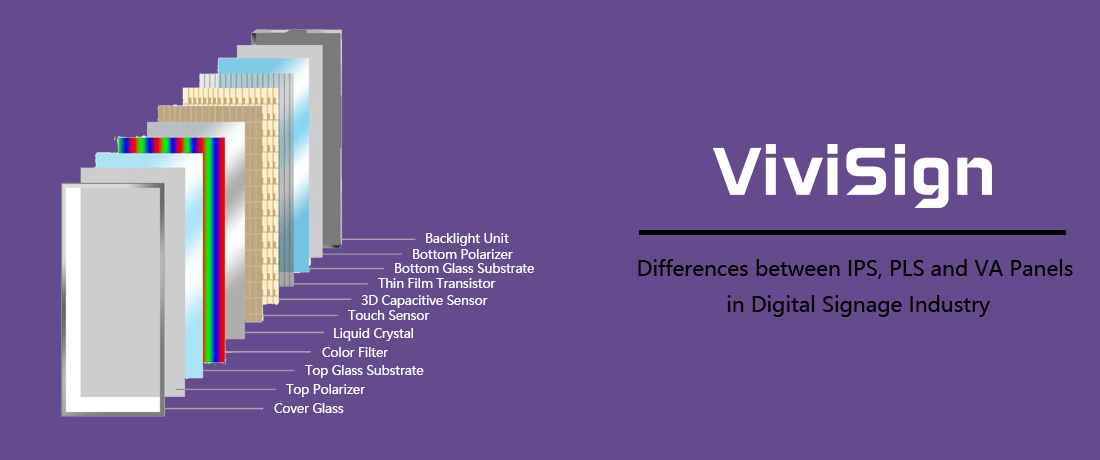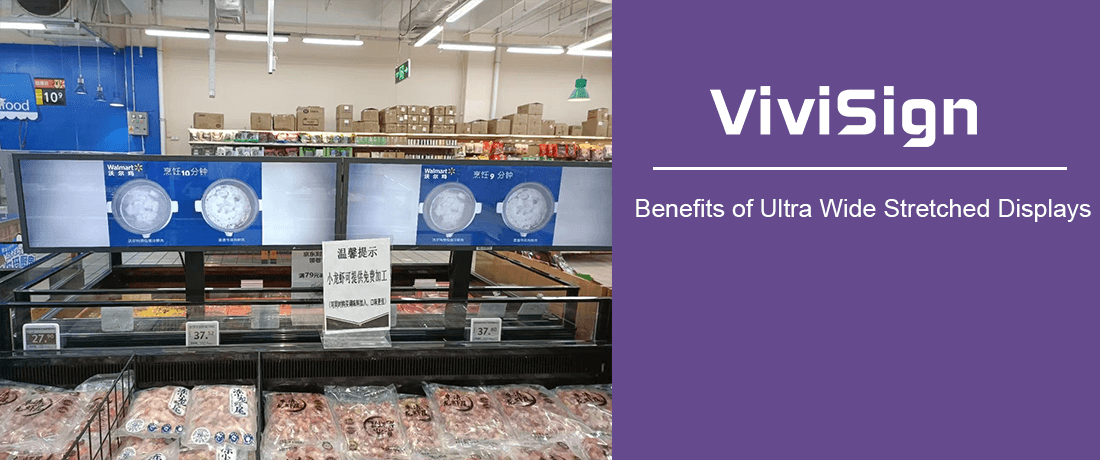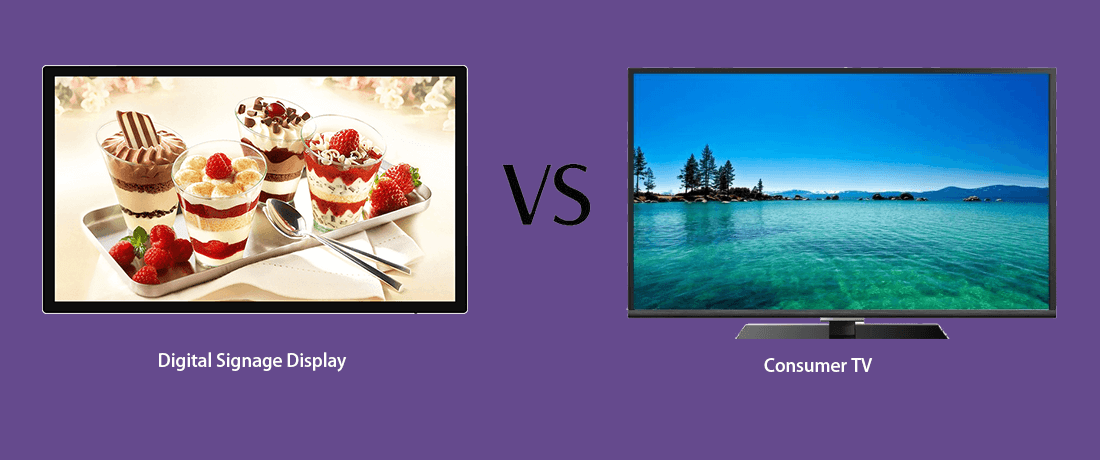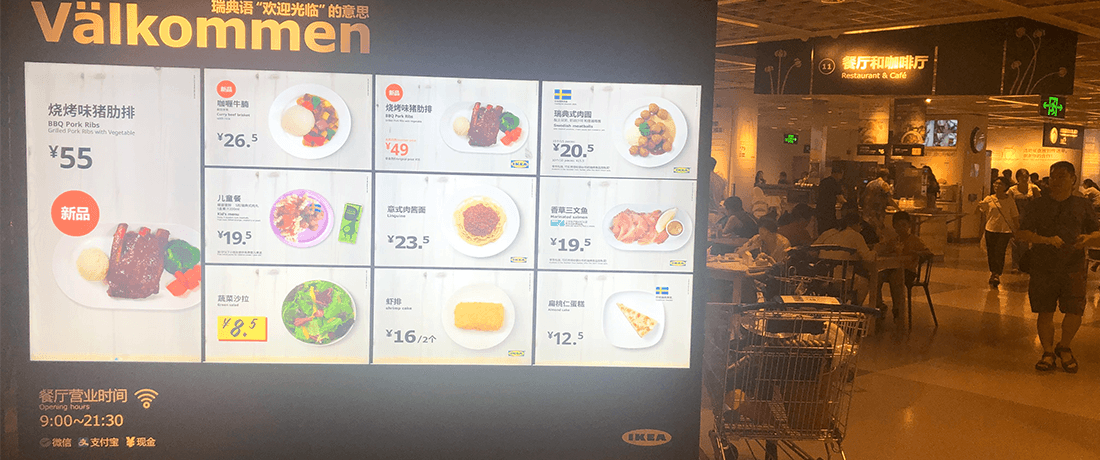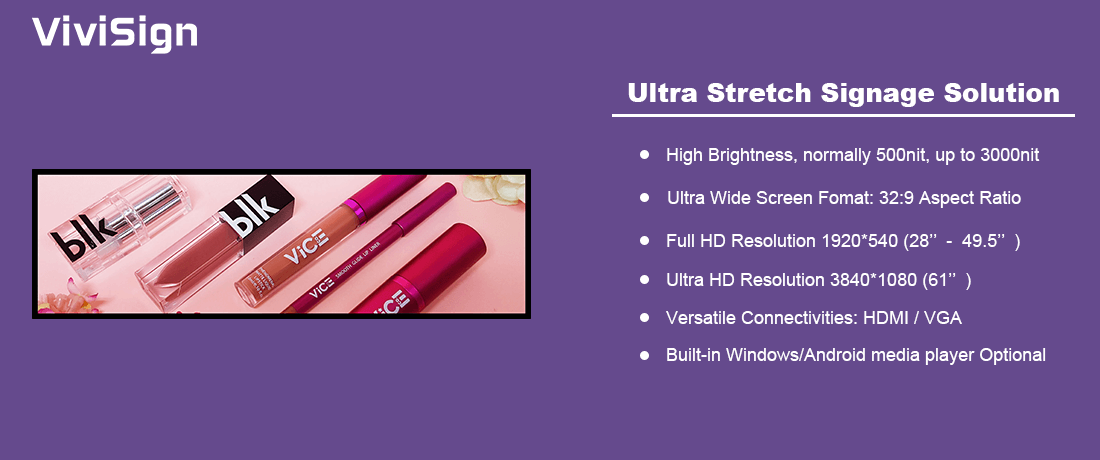Differences between IPS, PLS and VA Panels in Digital Signage Industry
At a Glance
In digital signage industry, LCD Panels are very important for the digital signage hardware as all the information is finally displayed via the LCD Screens. There are different technologies in the LCD Panel market, including TN, VA, IPS and PLS, and how to choose the right LCD Panels for digital signage networks? In order to make a right choice, we have to understand what those technologies are and what advantages and disadvantages they have.
TN Panels
TN (Twisted Nematic) panels were the first LCD panel type, which has been widely used in the market because of the low cost. But now they are going to be out of the market because TN LCD Panel worse color reproduction and poor viewing angle of TN panels, of course, advanced technology development including VA, IPS and PLS is also an important reason.
IPS Panels
IPS (In-Plane Switching) is a technology from LGD, and it overcame the difficulties that TN panel facing, especially for poor viewing angle and the worse color reproduction. Basically, IPS panel has full viewing angle and no color distortion on wide viewing angle, but it also has disadvantages like slower response time and lower refresh rates. However, full viewing angle and color accuracy are very important in digital signage now, so more and more commercial displays are using IPS panels in the market. The other important is that dynamic contrast ratio of IPS panels is extremely good although static contrast ratio is not good.
PLS Panels
PLS (Plane to Line Switching) from Samsung, which is quite similar to IPS panels, so that they have the same advantages and disadvantages. Compared with IPS panels, PLS panels is much brighter and energy saver, those are claimed by Samsung Display. Another similar technology is called AHVA from AUO, and FFS from BOE. Differentiations among them are really rare.
VA Panels
VA (Vertical Alignment) panels offer a solid medium between TN and IPS panels. As compared with IPS Panels, VA panels has higher refresh rate, and a higher brightness, and best static contrast ratios on the basis of wide viewing angles and color accuracy. However, VA panel’s power consumption is higher, lower response time, and the panel color uniform is not good although VA panel’s black color is better. Samsung SAV (Super Vertical Alignment) and AUO AMVA (Advanced Multi-Domain Vertical) are most common in VA panel technologies.
